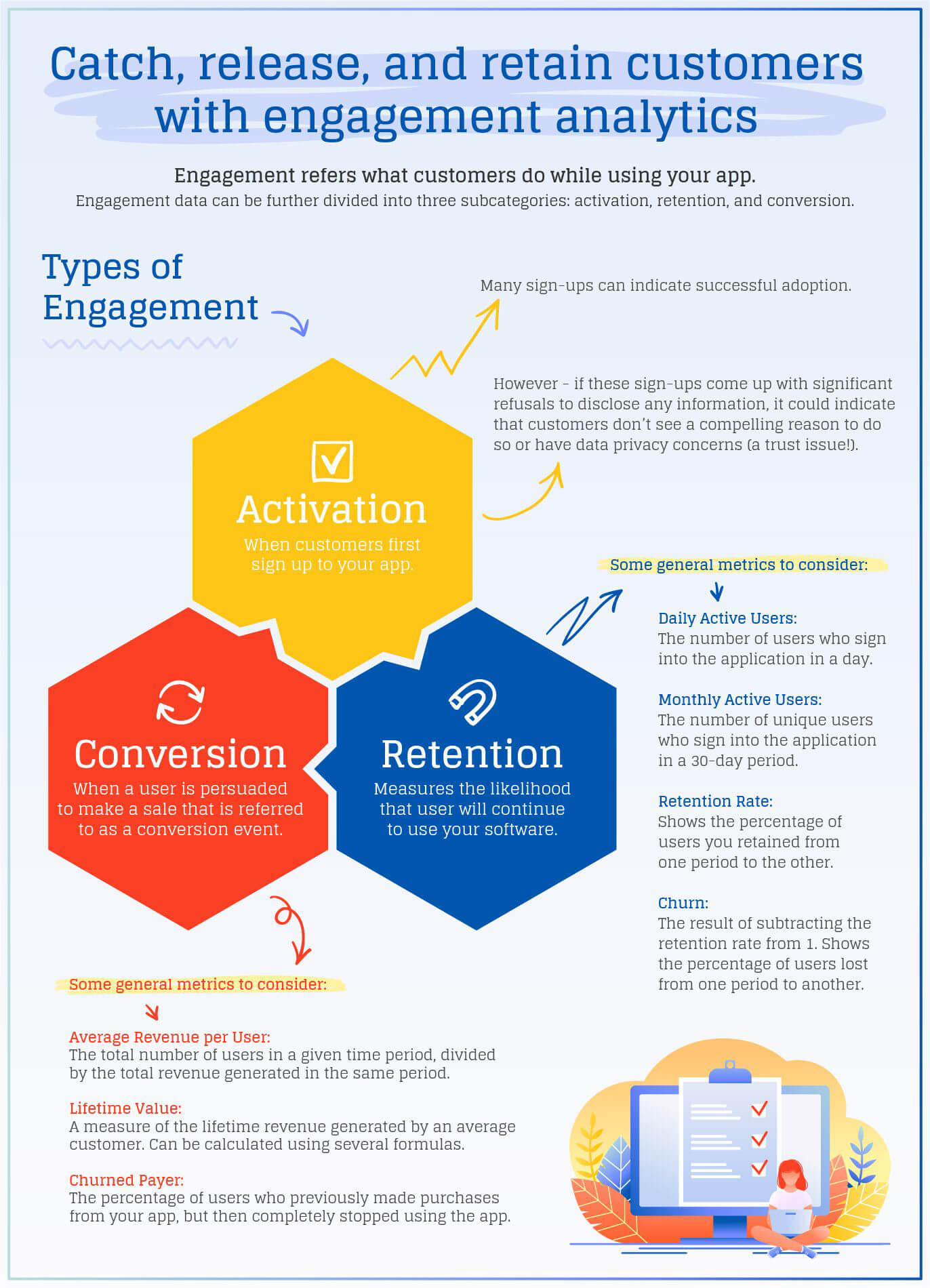It’s a data-driven world for marketers. To successfully navigate it, we must make predictions using tools and processes that accurately evaluate customer engagement – that’s where customer analytics comes in to determine a customer’s value to the organization by producing actionable insights, segmenting customers, spotting trends, and using predictive analysis. They’re of incredible value when used correctly and ethically to improve return on investment.
As the field of analytics has evolved, machine learning is playing an increasingly important function, with deep dives producing uncovered depths of relational data, all of which serves to improve the quality of customer intelligence gathered and improve relationships with customers as a result.
Important considerations for any marketer looking to make the most of customer analytics can be bucketed within the following three categories: Demographics data, customer interests, and engagement.
Yes to demographics data – but don’t be creepy!
Gathering demographic information is key to building an accurate customer profile. This includes personal information, such as the user’s name, age and gender, as well as the user’s location, device type, and operating system.
You can source this directly from software or by using third-party software development kits. Asking individuals to provide some of this information when signing up for services is a useful way to capture a good amount of demographic information.
As always be considerate, not creepy when asking for personal data. As GDPR has continued to make organizations fearful of fines, your marketing strategy should take compliance with local, national, and international legislation into account.
Put another dime in the jukebox, baby: Understanding customer interests and likes
Building a great product that people want to buy means understanding customer preferences. This can be achieved on the buying journey, through surveys and gathering customer experience data, and combining these with analytics analysis to develop a full picture of what’s wanted, and when.
An example could be capturing information about each user’s favorite sports and teams, their preferred method for receiving score updates (such as SMS or mobile push, or not at all), and if they like to attend live sporting events. If your business does a lot of work with sporting organizations, this could be the key differentiator in a crowded digital marketplace.
Engagement terms you must know about customer analytics: An infographic
The future of customer analytics
The future of customer analytics is only going to get more complex and integrated into omnichannel strategies as marketers capitalize on collaborative tools that examine customer behavior before, during, and after a purchase.
Reputational algorithms will play a larger part in the trend towards greater use of data to enhance and sustain a return on investment while preserving an excellent customer experience.
Companies that are successful at segmentation, implementation and execution of a nuanced customer experience feedback strategy based on useful insights will ultimately be victorious.


